Heat stress management in poultry
It's getting hotter on earth - What about heat stress management in poultry? Read here how to overcome heat stress in your chickens with nutrition....
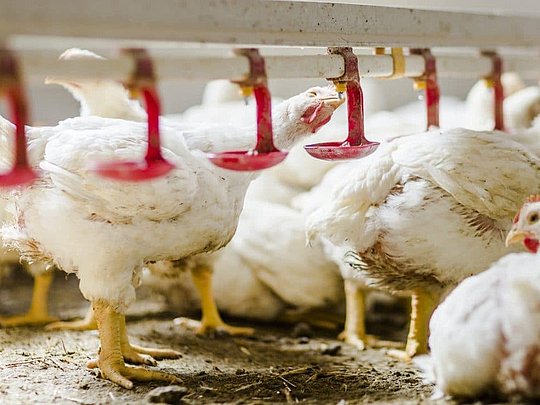
Not only we, especially our animals suffer from heat stress – particularly poultry.
In the summer months, outside temperatures quickly reach highs of over 35°C – this means it can get hot in the poultry house. Modern broiler breeds have a continuously increasing growth rate and feed efficiency, which coincides with a reduced heat tolerance. Housing broilers at high ambient temperatures adversely affects performance, intestinal integrity, immune response, and meat quality. It needs a good heat stress management in poultry.
Did you know?
Heat stress is an important environmental challenge for the livestock industry, especially in newly industrializing countries in the (sub)tropics. In US, the costs of heat stress amount to more than 160 million US$ per year (Shao et al., 2018).
Hot, humid weather has large negative implications for animal production: A bird’s response to rising temperatures can lead to significant performance losses due to lower feed intake and reduced feed efficiency which in turn leads to reduced body weight gain and egg production.
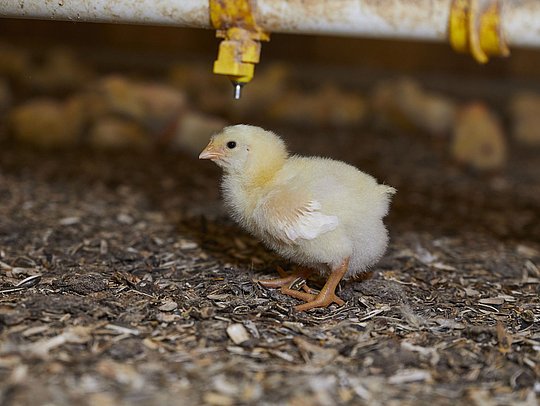
Heat stress as performance brake
The condition of heat stress occurs when animals unable to lose their body heat due to high ambient temperature in combination with high relative humidity, resulting in unfavorable consequences that range from discomfort to increased mortality.
The impact of heat stress depends on several factors including age and genetics, health status, nutritional status, and rearing conditions.
Heat stress can impair food safety
Not only the growth performance is reduced by heat stress in poultry – food safety also may be impaired. Due to increased turnover and reduced intestinal integrity, more pathogenic bacteria such as Salmonella enteritidis can pass the intestinal barrier, enter the body tissues and cause inflammation. Also Salmonella counts in body tissues (muscle/meat) increases. The resulting reduction in food safety can pose a major risk to the consumer. It’s good to adapt your heat stress management in poultry to support food safety.
6 key facts about heat stress in poultry
Dry heat or a combination of high temperatures and high humidity causes a variety of behavioural, physiological and immunological changes in poultry. Thus, there can be short and long-term negative effects on the immune system, as well as on the welfare, productivity and ultimately health of the animal.
Lets have a look of some of them
In acute heat stress situations, the synthesis of corticosterone, adrenaline and noradrenaline can be increased, resulting in enhanced muscle activity, increased respiration and blood glucose levels. These increased plasma cortisol levels may stimulate muscle breakdown and lipid peroxidation in muscle tissue, which is reflected in high levels of malondialdehyde (MDA) in the breast muscle of broilers, for example.
The reduction of feed intake is one of the first notable effects of heat stress in poultry and accounts for around 90% of the reduced weight gain
The released stress hormones can reduce the release of steroids and gonadotropins, resulting in reduced follicular development in hens
Hyperventilation or „panting“ to dissipate body heat can lead to an increased release of CO2, which is necessary for the synthesis of calcium carbonate for egg shell formation. Heat stress has also been shown to increase blood pH and to disturb the acid-base balance. This change in the acid-base balance can have negative effects on cardiac muscle activity and bone density.
The activity and efficiency of lymphatic organs such as bursa, spleen and thymus may be impaired, leading to an increased number of monocytes, lymphocytes and heterophils. The consequence of this can be an impairment of the immune response in poultry
The synthesis and release of vitellogenin, which is necessary for the deposition of egg yolk, could be suppressed during heat stress
What about oxidative stress?
Chronic heat stress and associated oxidative stress can lead to an overloading of the body’s anti-oxidative mechanisms, thus may compromise intestinal integrity. Reactive oxygen species (ROS) – also known as “free radicals” – produced during oxidative stress, can attack the intestinal mucosa cells and may lead to increased inflammation. As a result, the intestinal epithelia can become more permeable, the absorption of nutrients can decrease and the loss of water from the gut may increase. This „leaky gut“ can lead to an increased translocation of bacterial toxins, antigens and bacteria into the bloodstream, triggering the immune system and strongly challenge detoxifying organs – especially the liver. As a result, the animals’ performance may suffer.
And when summer comes? These heat stress management measures can help you to reduce the stress factors in your poultry as much as possible:
- provide additional drinking water
- make sure that your poultry moves regularly – this will allow better heat dissipation
- switch on your cooling system even before the barn’s air is hot
- ensure a constant negative pressure (10-15 Pascal) and a sufficiently high air speed (60 cm/sec)
- change your feeding plan and use feed additives Our phytogenic expert will be happy to advise you.
What about gut?
You want to get the latest scientific insights in gut health in poultry and swine?
Keep cool with the power of nature
In particular, reduced intestinal integrity and the associated risks require the use of high quality feed, adapted heat stress management measures in poultry and in best case feed additives to support the maintenance of normal intestinal health and nutrient digestibility – especially in hot and humid conditions.
Phytogenics are a valuable tool to meet current and future challenges in animal production. Many plants (e.g. thyme, oregano) and their active substances show effects that can support the antioxidative capacity of the body, especially under heat stress and thus contribute to the maintenance of intestinal integrity. These mechanisms can support the poultrys‘ resilience – that means the animal can fully exploit its genetic potential.
Support the body’s own forces
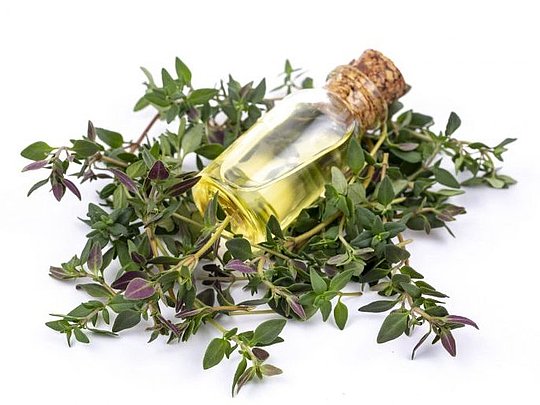
Many aromatic plants, especially those of the Labiatae family (e.g. rosemary, thyme, oregano and sage), have been extensively studied for their antioxidant and anti-inflammatory properties. For example, thyme oil improved intestinal antioxidant status, reduced MDA content in the enterocytes and improved intestinal integrity. These activities are not only related to the phenolic compounds but also the non-phenolic compounds. These may show considerable anti-oxidative and anti-inflammatory activities by stimulating the detoxification of generated reactive oxygen species during stress. This is via either directly scavenging free radicals or indirectly by upregulating the expression of antioxidant and anti-inflammatory genes resulting in the production of antioxidant enzymes and anti-inflammatory proteins.
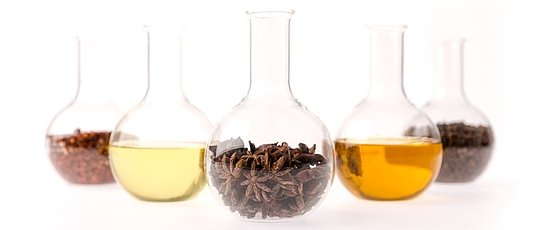
Maintain normal intestinal integrity
Besides limiting the oxidation-inflammation cascade, assorted essential oils have been shown to stimulate heat shock proteins that significantly contribute to the preservation of the intestinal barrier by inducing repair processes and improving cellular defense mechanisms.
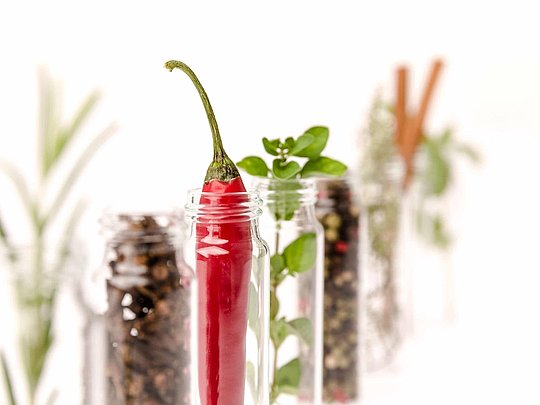
Improve feed intake and nutrient digestion
It was shown that assorted pungent substances and essential oils have the ability to enhance the secretion of digestive juices and to stimulate nutrient transport from gut lumen to bloodstream, resulting in improved feed conversion. Additionally, assorted phytogenic ingredients support feed intake and nutrient digestibility and thus maintain high performance even during periods of heat stress.
You would like to have more information about phytogenics in poultry?

Anne Oberdorf
Anne has always been fascinated by the unknown, the diversity and beauty of nature. Her love for nature brought her to Delacon in 2018 after studying agricultural sciences, where she worked as Technical Communications Manager and later as Product Manager Aquaculture. Since February 2021, she has been taking a new, natural career path outside of Delacon.










